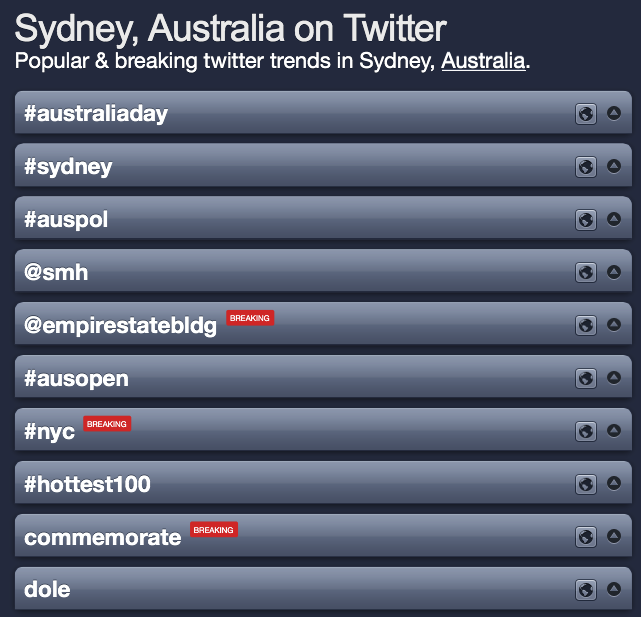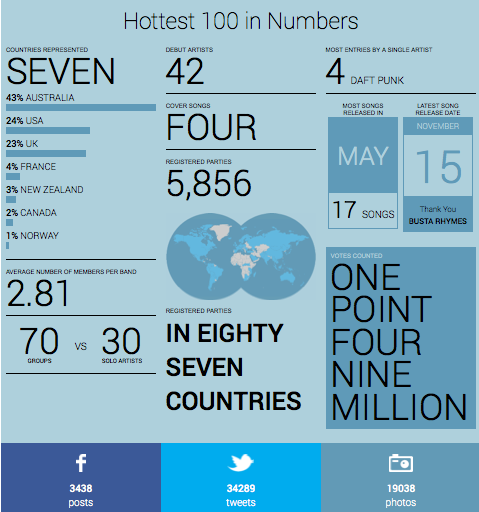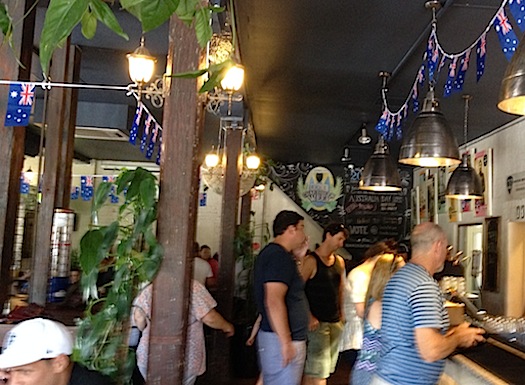Steve Ahern ponders whether radio can capitalise on ‘event programming’ in the same way as television.
I went to three pubs on Australia Day… purely for research purposes of course.
In each pub the Hottest 100 was playing on the speakers and the pub was joined with 5,856 other registered Hottest 100 parties, participating in ‘Australia’s biggest musical democracy.’
Triple J provided posters and party pack goodies to ensure the parties went well and that triple j branding was prominent. The Hottest 100 started with a good (but not a new) idea, captured the imagination of the audience, and has now grown into a great event, which has huge benefits for Australia’s national youth network. It is real and authentic, with listeners willingly using social media to spread the word about the countdown better than any marketing campaign could ever do.
In this new world of social media, ‘organic marketing’ that happens when your fans spread news about you, is a powerful force.
It was a great example of Event Radio. It united people around Australia, and the world, in real time, who cared about what was being broadcast and interacted with each other using the power of social media.
 The twitter hashtag #hottest100 was in the top ten all day, and so were many individual song hashtags, as fans discussed why a favourite song came in higher or lower than expected.
The twitter hashtag #hottest100 was in the top ten all day, and so were many individual song hashtags, as fans discussed why a favourite song came in higher or lower than expected.
Event TV is a more discussed topic than Event Radio, because television companies are desperately looking for ways to stop audiences downloading and timeshifting their content, and event tv offers one way to do that. See interesting discussions of that topic here and here.
Live events ensure TV audiences don’t fast forward the ads and allow tv companies to leverage the synchronous and asynchronous social media conversations that happen around the event, during and beyond the broadcast time.
Radio companies can learn from the successes and failures of tv, as our industry seeks to achieve similar goals. Lessons learnt include: be genuine, let your fans be your biggest advocates, follow the topics and content the fans suggest to you, engage in the conversation, be generous and (where appropriate) humourous in your responses.
If you ‘own’ the event then it is much easier to leverage the hype back to your network. Masterchef, Big Brother and other event tv shows are some of the best examples of owning an event.
There are other events that no one station can own, such as football finals, cricket tests and Olympics, which exist out of the control of the media company, but can sometimes be leveraged successfully. Since the advent of texting and twitter, ABC Radio has successfully leveraged the conversation happening around cricket to its advantage. Fairfax Radio is trying to use the same strategies for its newly established cricket coverage.
Australia’s top twitter trends last year were:
Sport:
2. #Ashes
3. #AFLGF
4. #NRLGF
5. #ALeagueGF
TV
2. #BBAU
3. #MKR
4. #logies
5. #thebachelorau
Politics
2. #Spill
3. #AusVotes
4. #YouDecide9
5. Rudd
Events
2. #telethon7
3. “Happy New Year”
4. “Christmas”
5. “Happy Easter”
Radio music shows The Bump and Smallzy’s Surgery are both adept at leveraging their fans around visiting artists and music events. Both shows regularly trend top ten in Australian twitter statistics when they hook onto events. Last year the top 10 music hashtags were:
2. #BumpShowBieberBlitz
3. #mtvstars
4. Harry
5. “Justin Bieber”
6. #TheCollectiveFollowSpree
7. #Our1DMomentWithSmallzy
8. #Ask5sos
9. #BumpBeyonceBackstage
10. #BumpingMe1DTickets
In Europe, research company GfK recently announced a partnership to introduce GfK Twitter TV Ratings in Germany, Austria and the Netherlands. The new service will provide insights into the frequency and reach of messages from Twitter users associated with television programs and campaigns. Radio in Australia could benefit by similar integrated tracking of broadcast and social media engagement for events broadcasts, giving media agencies and advertisers richer analytics to plan and evaluate cross-media campaigns. See more on GfK’s initiative here.
Below are the stats from this year’s Hottest 100. Here at radioinfo, we look forward to covering other innovative Radio Events as 2014 progresses.


